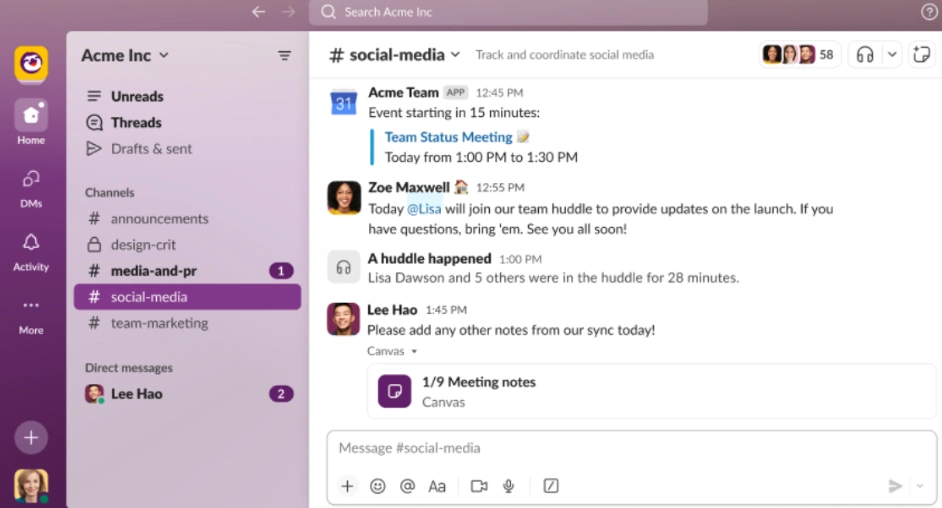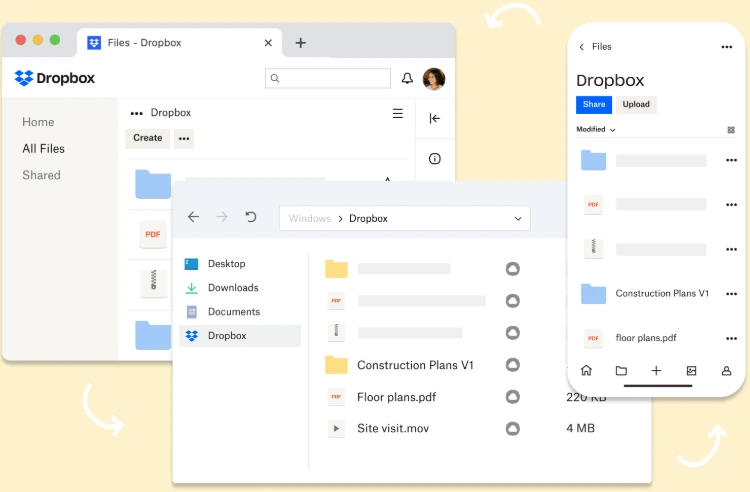Why Startups Should Use the MVP Approach for CRM and ERP Development
Any executive wants to make their business as efficient as possible, whether they have 3 or 333,333 employees. Great CRM (customer relationship management) and ERP (enterprise resource planning) tools help small and large teams.
But what if there are no resources for full-scale development — neither money nor time? It is where the MVP (Minimum Viable Product) concept comes into play. In our context, successful ERP implementation with MVP is the adoption of the most vital tools required for your business’s survival. Today, we will explore the specifics of MVP and why you need to implement custom/hybrid CRM and ERP as soon as possible.
The Importance of CRM And ERP Implementatio
First things first, let’s examine how exactly these tools work. CRM is for customer data, such as storing contacts, purchase history, and analyzing sales. On the other hand, ERP covers a broader scope, including businesses’ finance, inventory, procurement, and production.
Both ERP and CRM system implementation are crucial even for small and medium-sized teams, as those tools can
- Save time by centralizing data, reducing manual data entry, and making information accessible to all employees.
- Minimize errors by automating processes and reducing human input in tedious tasks.
- Improve communication by ensuring all departments work with the same data.
- Enhance reporting and analysis, allowing businesses to track performance and identify areas for improvement.As you can see, there are many ways how to implement ERP and CRM, and the final choice is up to you. However, these are complex tools, so it will be easier to start with the basics and gradually scale them along the way.MVP ERP and CRM for startup companies allow you to test the newest technologies among the first. For instance, you may develop a simple order processing automation tool and scale it to a full-fledged ERP in less than a year. This approach allows you to safely test hypotheses without affecting your core business.
Benefits of the MVP Approach in CRM/ERP Development
Using an MVP (Minimum Viable Product) approach allows startups to optimize resources, adapt quickly to market changes, and build a product that delivers real value. For small and medium-sized businesses, MVP ERP software implementation can assure you that every penny invested is used with maximum efficiency.
The MVP strategy focuses on launching a product with basic features and improving it based on user feedback. That way, businesses stay flexible, reduce risks, and avoid significant losses.
Fast Market Entry
With MVP, you can launch a product months earlier than expected. According to CB Insights, around 35% of startups fail due to low market demand. Delays in product development can result in lost opportunities or diminished competitive advantage.
By launching a basic CRM or ERP for a startup in just a few months — instead of spending years on a complex solution — businesses can start using the product in real conditions and gather valuable user feedback early on.
For example, rather than developing a fully automated system for all business processes, you can begin with a simple customer database and sales tracking tools. The product can then be scaled and expanded based on user needs over time.
Testing Ideas and Gaining Early User Feedback
Another key benefit of the MVP approach is the ability to test ideas in real-world conditions. No matter how solid a concept looks on paper, the theory remains just theory, which becomes outdated sooner than you realize it. The only way to truly validate your ideas is through practical testing.
Early feedback helps avoid mistakes during the development and CRM implementation into existing business. Instead of wasting time and resources on features that users don’t need, you can focus on building what actually matters to them.

Even if test results aren’t bright, it is still a lesson. It’s cheaper to find a bug or glitch during testing than launch a broken app, risking losing your customers
For example, if your initial CRM system gets feedback requesting more analytics tools, you can quickly adjust the product to meet that demand. Conversely, if a certain feature turns out to be irrelevant, you can easily remove it from your development roadmap.
Budget Optimization
If you decide to develop a full-fledged system, the ERP implementation process may cost you hundreds of thousands of dollars. Most startups don’t have that amount of money.
Even if an angel investor is willing to provide you with $200,000+ for development, pouring resources into unnecessary features at the early stage isn’t the brightest move. Instead, launch an MVP to focus on essential features and spend the rest of the money on marketing.

Even the kindest investor still wants their money back. The MVP can help you with it.
The successful ERP implementation encourages the MVP concept, as it shows you that you don’t need to jump over your head to become prosperous. Proper resource allocation is the key to triumph. By staying lean and flexible, you save both time and money while delivering real value to your business.
Market Adaptation
What worked a few months ago might be useless today. The MVP approach in ERP software implementation gives startups the flexibility to adapt quickly to market changes. Instead of spending years perfecting an “ideal” product, you’re continuously testing hypotheses and adjusting the product based on real-world feedback.
If your competitors release new features, you can quickly adjust your product to keep up. Falling behind means risking irrelevance — no matter how great your product once was. This iterative CRM implementation process ensures that your product remains relevant, valuable, and aligned with user expectations in the ever-changing market conditions.
Key Steps for Implementing an MVP for CRM/ERP Systems
Success stories from large companies are always inspiring. But it’s even more important to understand that even the greatest projects started with a small MVP. Developing an MVP is an inseparable part of the ERP implementation process, as it helps you mitigate costs and risks during the development and testing phases.
1. Define Core Business Processes
The first step is to identify which business processes you want to automate with the new software. Focus on the most critical part of your business to get valuable user feedback.
- For successful CRM implementation, it may include sales processes, customer management, communication, and sales analytics.
- For ERP implementation, it could involve inventory management, warehouse operations, and order management.Understanding these processes will help you build a relevant ERP implementation roadmap and focus on tasks that truly matter.
2. Develop Core Functionalities
Identify the minimum set of features for your startup. Keep everything basic, without adding unnecessary features.
- In a CRM startup, these core features may include contact management, deal tracking, email sending, and basic analytics.
- In ERP software, it could be simple inventory tracking, procurement management, and foundational financial operations.Your MVP should address real business needs and ensure a smooth implementation without overwhelming users with excessive options.
3. Create a Simple Interface
A great MVP is accessible and user-friendly. Avoid adding complex graphics or extravagant functions in the early stages. CRM planning and implementation must include onboarding tools to ensure that even non-tech-savvy users will understand your system and the logic behind it.

Don’t let your users have a meltdown while using your software. You are not an official national tax service (If you were, contact us, and we’ll create a more user-friendly interface 😅)
4. Test and Gather User Feedback
Once your MVP is live, actively seek feedback from its users. This will help you understand whether the features work as intended and what features to add next. We recommend regularly collecting feedback to identify issues and identify improvement areas.
Keep in mind that you need to prioritize real-world user input to make your application as friendly as possible.
5. Iterative Improvement
Once you gather feedback, fix all reported bugs and improve your service. Remember that it’s a neverending process since you’ll need to constantly grow, unlock new opportunities, and scale to fit more users.
Focus on necessary and highly requested features, discarding low-priority ideas to avoid overloading the system. Don’t be afraid to use hybrid solutions for custom or hybrid CRM planning and implementation.
Ready-made solutions are hard and expensive to scale, while hybrid software provides you with ease of development of ready-made tools and unlimited scalability of custom software. Consider cloud-based solutions to reduce development costs even more.
6. Analyze Results and Scale
During scaling, thoroughly analyze the most popular functions and potential issues with them. If something isn’t working, don’t be afraid to overhaul it. A well-executed ERP implementation process requires constant refinement.
Once the MVP delivers the expected results, gradually add more complex features and integrations. Don’t be afraid to take your time on refining, as scaling should only happen when the core features are polished and delivering value.
Common MVP Mistakes in CRM/ERP Systems
We know that building an MVP for a CRM or ERP is a complex task. Your goal is to launch a functional version quickly without sacrificing the quality of the end product.
Whether it’s feature bloat or a lack of user feedback, these common pitfalls can hinder your product’s success. Let’s explore some of the key mistakes and how to avoid them during your CRM or ERP software implementation.
Feature Overload
Teams often aim to build a “perfect system” with numerous disruptive features simultaneously. It often leads to prolonged development time and increased costs. Instead, we recommend you focus only on core user problems.
Build 3-4 essential modules that address the primary pain points of your clients rather than overloading the system with dozens of features.
Lack of Integration with Third-Party Services
Clients frequently request integrations with email services, financial tools, or messengers. Ignoring this during the initial ERP implementation steps can isolate your system and make it less useful.
At the MVP stage, implement at least 2-3 basic integration with a popular service that suits your target audience. It will enhance the value of your system and make it even more user-friendly.
Poor System Architecture
A poorly planned system architecture is one of the most common technical pitfalls when launching an MVP during an ERP or CRM software implementation.
While rushing to launch the product, teams often take shortcuts that result in technical debt. It can become a major obstacle when the system needs to handle real-world usage by early clients.
Instead of building an overly complex solution from the outset, prioritize scalability and flexibility.
Neglecting UX/UI
The fastest way to lose users is to launch a service with a complicated or confusing interface. Early adopters are less forgiving of poorly designed user experiences. If they feel frustrated, be prepared for their negative reviews. You can get upset and abandon the development, or you can try to make the interface more intuitive and user-friendly.
Focus on simplicity over афтсн visuals. Users should navigate the system цithout any additional assistance. Prioritize consistency across different elements of your interface. Ensure that all menus, buttons, and workflows follow a logical structure to avoid confusion.
Early feedback from users can also help fine-tune your design, so keep iterating based on real-world usage.
Ignoring Feedback from Early Clients
Many startups make the mistake of assuming they understand user needs better than the users themselves. This mindset can be detrimental to product development. If a product is developed without taking user feedback into account, it often ends up not addressing real, practical problems faced by customers.
Early clients are valuable resources in shaping the direction of your product since they offer insights into pain points, preferences, and the true value your product provides.
Ignoring Mobile Access
CRM and ERP systems are often designed primarily as desktop solutions, focusing on traditional office environments. However, with the increasing trend of remote work and on-the-go tasks, many modern users expect those systems to be accessible from their smartphones as well.
Ignoring this need for mobile access can limit the usage of your product, especially for users who rely on mobile devices for work. So, we recommend you think of a mobile version of your service. Incorporating such solutions at the earliest CRM implementation steps boosts customer satisfaction, reduces the risk of abandonment, and increases overall engagement.
Examples of MVP Success Stories
The journey from idea to product often starts with a simple concept. MVPs have helped startups like Slack and Dropbox test their ideas early on, gather user feedback, and adapt their products accordingly.
To show you the importance of the MVP, we will share with you these 5 success stories.
Slack: From Internal Tool to Global Product
Slack started as an inner communication tool for a game development team. Initially, there were no plans to release it to the general public. However, when the team realized the tool’s effectiveness, they decided to take a chance.
Slack’s MVP was a chat tool with file-sharing and message history search features. Despite its simplicity, the product received positive feedback from users, allowing Slack to scale rapidly.

Slack’s MVP was a chat tool with file-sharing and message history search features. Despite its simplicity, the product received positive feedback from users, allowing Slack to scale rapidly.
Dropbox: Video Prototype Before Full Product Launch
When Dropbox’s founders wanted to test their idea, they didn’t have a fully developed product. Instead, they created a video prototype demonstrating how their service would work. This video generated significant attention and helped them secure their first customers.

This is a classic example of an MVP strategy. Insteinvesting heavily in developing a complete product, the team gauged market demand in the simplest way possible.
HubSpot: Evolving from Basic CRM to a Comprehensive Platform
When HubSpot launched, its product offered basic CRM functionalities, such as client tracking and sales analysis. They create new functions only after gathering user feedback and analyzing it comparing it to the general state of the market.
Thanks to the MVP approach, HubSpot could scale gradually into a full-fledged marketing platform, now used by thousands of businesses worldwide.
Airbnb: Testing the Idea with Personal Properties
Airbnb’s story began in 2007 when Brian Chesky and Joe Gebbia decided to develop a rental platform that would allow people to rent out their apartments and rooms to travelers. However, they faced challenges early on, such as insufficient funding and doubts about the idea’s potential.
They decided to lease their apartments during a local conference to test their concept. They set up inflatable mattresses in their living room and created a website where others could book a place to stay.
It was a key part of their MVP testing, allowing them to gather direct feedback from early users.
Twitter: From Internal Communication Tool to a Global Social Media Giant
Twitter began as an internal project at Odeo, a podcasting company. However, due to increasing competition in the podcasting industry, Odeo decided to pivot. The idea that became Twitter emerged when one of Odeo’s employees, Jack Dorsey, proposed a short-message SMS service.
The concept was simple — employees could communicate via short text messages. The first MVP of Twitter was a basic platform for sending short messages, limited to 140 characters. Initially, the service was for internal use only, but it quickly gained popularity within the company and its friends.
Eventually, Jack Dorsey and his team decided to open Twitter to the public and began enhancing the platform with features like following other users, hashtags, and retweets. The MVP approach allowed Odeo to validate the demand for a new kind of social platform before committing significant resources to development.
How MVP Helps Startups Scale
Most startups lack time, budget, and team size. So, you need to be creative while developing the ERP or CRM to fit the new company’s needs. An MVP lets you focus on the core features that solve users’ primary. You may add some fancy ✨extras✨ later, but for the first few months, your users will see a basic app that closes their needs and no more.
With an MVP, startups can efficiently validate their ideas, collect data from real users, and understand what works. This process helps reduce costs during later scaling phases as the product evolves based on actual user feedback. It acts as a foundation for future growth.
Startups can quickly pivot or enhance their product in response to changing market needs or user demands. This adaptability is crucial when competition grows, or new trends emerge.
MVP Is Your Friend, Not An Enemy
Launching an MVP isn’t just about getting to market as fast as possible. This approach is about building the right foundation for growth with limited capacities.
To achieve the best results, you need to collaborate with experienced teams who know the specifics of MVP in the inner business tools. They will use best practices for CRM implementation to ensure that you’ll get the best possible software solution for your case. Corpsoft Solutions is that team that is ready to become your ERP and CRM implementation guide and build you an app that will perfectly suit your needs.
We have a vast portfolio of collaborations with European, Pan-American, and Asian businesses. This means that we can find a development approach suitable for your case, irrespective of the industry or your current location. Book the first consultation now so we can specify a work scope as soon as possible!
FAQ
What is ERP implementation?
It’s the process of integrating Enterprise Resource Planning software into a company’s operations. It involves planning, installing, customizing, training, and launching the system to manage core business processes like finance, HR, supply chain, and inventory.
What are examples of ERP systems?
The most well-known examples of ERP are SAP, Oracle NetSuite, Microsoft Dynamics, and Odoo. These platforms help businesses manage processes such as accounting, procurement, and project management from a unified system.
What is ERP system implementation?
It is the process of setup and deployment of an ERP solution in an organization. It includes selecting the right ERP system, configuring it to meet business needs, migrating data, and training employees to use the software effectively.
How long does ERP implementation take?
ERP implementation typically takes 6 to 12 months, depending on the business’s size and the system’s complexity. Some projects for larger organizations can take over a year due to customization and data migration.
How can ERP improve business efficiency?
ERP systems improve business efficiency by automating processes, reducing manual tasks, and providing real-time data insights. It streamlines operations across departments, improves decision-making, reduces errors, and enhances productivity through centralized workflows.


